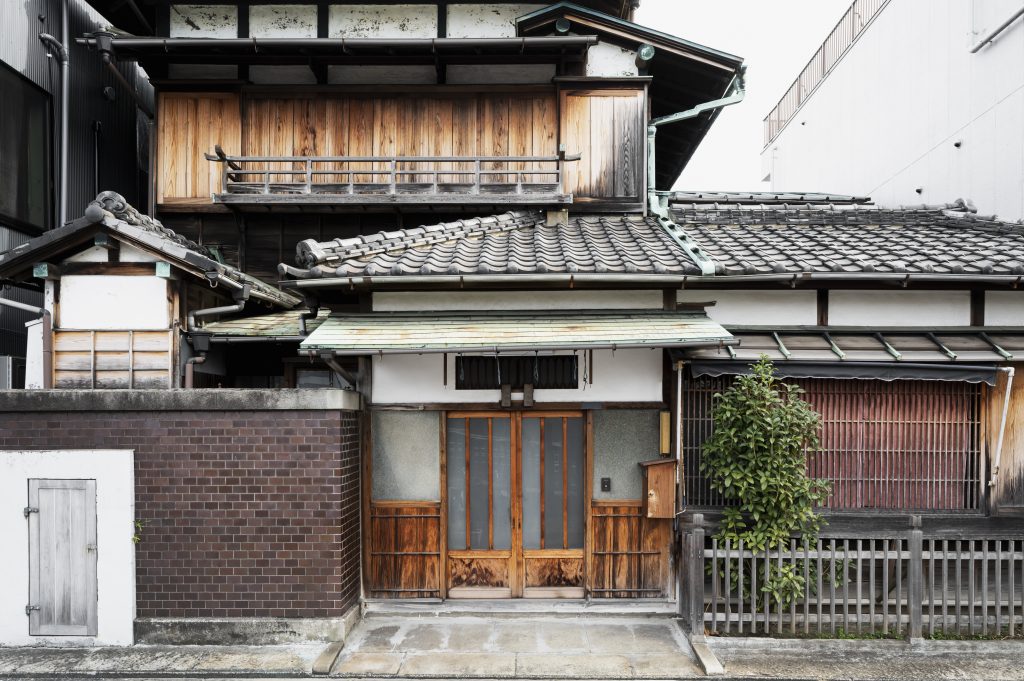
Renting an apartment in Japan can be very pricey in the beginning. On top of your first rent, you will need to consider several other fees such as key money, agency fees and other related fees. Moving in can usually cost up to three or four times your monthly rent. Furthermore, you will also need to buy furnitures, which is another extra cost and, unless you have a stable job and a sufficient salary, you will also need a guarantor, who may be the company you work at or a Japanese friend.
Finding an apartment in Tokyo: General information
As they arrive in Japan, most foreigners choose to live in a share house as it is usually the most convenient option. There are many reasons to choose to live in a share house at first, such as a cheaper rent, conviviality, flexibility and so on. Another reason can be multilingual support share house companies can offer thanks to their international staff. However, many newcomers to Japan still decide to rent an individual apartment instead of going to a share house, for more privacy.
[getpage file=”wordpress-shortcode/whitepaper-modal.html”]
Renting an apartment in Tokyo is not a piece of cake for everyone. Landlords rarely speak English and usually turn down foreigners who wish to rent their apartments. Nonetheless, it is still possible to find apartments to rent as a foreigner. Another challenge is to find a Japanese guarantor. If you’re coming to Japan with a work visa, your employer should usually help you in this process. Students might have a harder time meeting all the requirements, especially if it’s their first time in Japan and don’t know anyone there. Last but not least, if you happen to find an apartment you like and have a guarantor to back you up, you will most likely need to spend up to three or four times the amount of your rent for key money (present to the landlord), deposit and other related fees in order to be able to move in.
Measuring the size of an apartment in Japan
Japanese property ads include several information but some of them can be confusing for foreigners. For example, unlike many Western countries, apartments’ sizes in Japan are not measured in square feet or meters, but in tatamis, also called “Jō” 畳.
“Jō” is a traditional measure unit in Japan. It is still used today to calculate rooms’ sizes in houses and apartments. However, it doesn’t tell anything about the flooring material. It could be tatamis as well as anything else. When reading a property advertisement, you will often see on the floor plan “6 畳”. This means that the apartment’s size is equal to 6 tatamis. To convert this in metre square or feet square, you should know that one tatami measures 182cm (5.9 feet) by 90cm (3 feet) for an area of around 1.62m² (about 17.7ft²) or, in other words, a bit less than 10m² (106.2ft²) for 6 Jō.
Renting an apartment in Japan: Utilities
The way fees related to housing work in Japan is slightly different from other countries in the world. Thus, even though moving expenses in Western countries are usually confined to agency fees, deposit and rent, in Japan, different kinds of fees can add on to these. Here’s an exhaustive list of fees and charges that you will eventually encounter during your quest for an apartment in Japan. You will most likely find these words on ads and in the front stores of agencies. Being able to read them should help you getting around more easily.
First of all, in Japanese “rent” will be written: 家賃. This is read as “Yachin”. The agency fees we mentioned earlier will be written as: 仲介手数料, and pronounced “Chuukai tesuuryou”. They usually amount to the equivalent of one month rent. The deposit: Shikikin (敷金), generally amounts to one or two months of rent and will be refunded as you move out. However, it might not be repaid entirely in case some renovations are necessary upon your departure. Last but not least, and probably the most specific fees to Japanese renting culture, the key money, a sort of present to the landlord. It is called “reikin” (礼金) and can add up to the equivalent of 3 months of rent you will give to the landlord and that will not be refunded.
Nowadays, as the number of empty apartments is on the rise, these fees are slowly vanishing. Nonetheless, they remain prevailing and you might encounter them. Lastly, some tenants dislike having the same keys as the previous tenants, resulting in landlords requesting the locks to be changed after each departure. Each new tenant has to pay the fees for this change, which are called Kagikoukan.
Understanding Japanese apartments’ layouts
Japanese real estate world has its own codes to label apartments and houses’ layouts. Thus, even if, for example, the common language for layouts in America is 2 bedrooms, 1 bathroom, etc… in Japan, it is quite different as layouts start with a number followed by one or more letters.
The first number you’ll see will let you know about the number of rooms in the apartment. Then, the letters following this number will tell you about the type of rooms the apartment comprises. They actually come from English: Room, Living room, Dining, Kitchen. Thus, if you stumble on a 1K apartment, it means that it has a single room with a small kitchen area. A 2DK apartment will have 2 rooms as well as a dining and kitchen area, while a 3LDK will have three rooms on top of a living, dining and kitchen area.
- 1R: 1 single room.
- 1K: 1 room and a kitchen area.
- 1DK: 1 room and a kitchen and dining area.
- 1LDK: 1 room and a kitchen, dining, living area.
- 2K: 2 rooms and a kitchen area.
- 2DK: 2 rooms and a kitchen and dining area.
- 2LDK: 2 rooms and a kitchen, dining and living area.
- 3K: 3 rooms and a kitchen area.
- 3DK: 3 rooms and a kitchen and dining area.
- 3LDK: 3 rooms and a kitchen, dining and living area.

Understanding floor plans in Japan
On top of these acronyms used to describe the number of rooms and their functions in the apartment, additional information can appear on floor plans (間取り) put up in the front stores of real estate agencies in Japan.
Here are some examples. The kanjis for genkan (玄関) will often be shortened to 玄 and designate the place where you take off your shoes before entering the apartment or house. The kanji 洗, which means wash, indicates which part of the apartment can be used to install a washing machine. If you can’t read Japanese yet but can spot “バルコニー” on floor plans, it’s actually read “Barukoni” and literally means balcony. 浴室 (Yokushitsu) stands for “bathroom”. In most 1Rs, the bathroom and the toilets will be in the same room.
Finding an accommodation in Tokyo: Apartment or Share House?
As you may have noticed, renting an apartment in Japan is not easy, and applicants will need to go through numerous procedures before being able to settle in. On top of this, rents are usually quite high, to the point that moving into a share house is usually more cost-effective.
This will be especially true if you’re coming to Japan for only a short period of time, if you’re living by yourself or don’t know how to speak Japanese. In this case, it is highly recommended you move into a share house, at least in the beginning of your stay. Consider moving into an apartment only after having settled down in Japan for one or two years and when you can make sure living in an apartment is more profitable than living in a share house.

